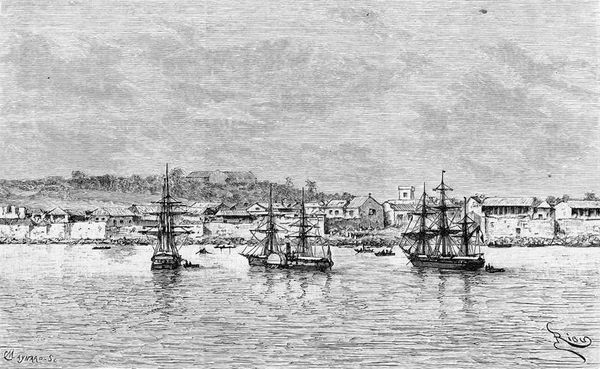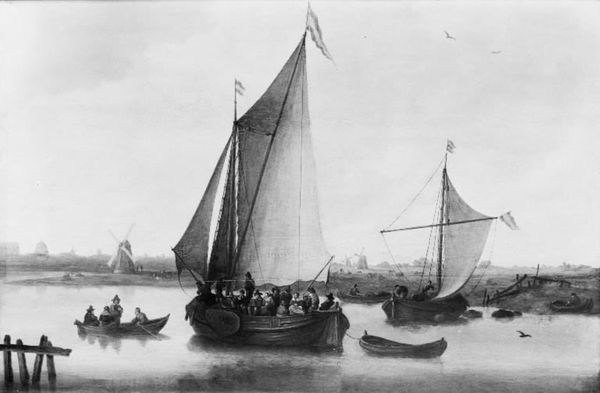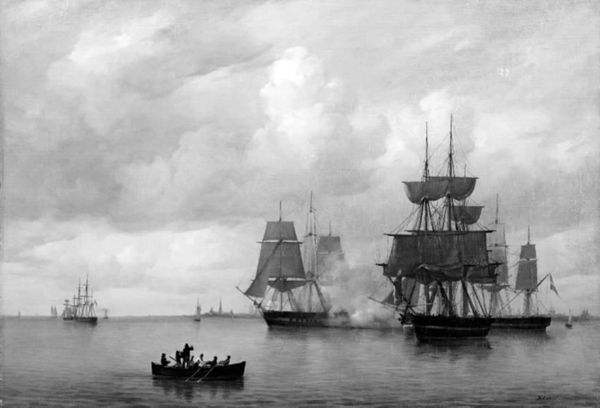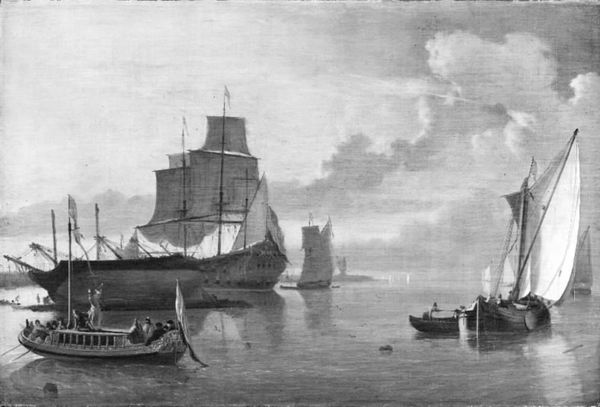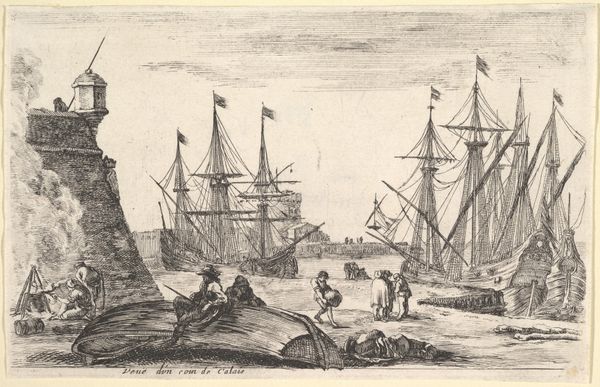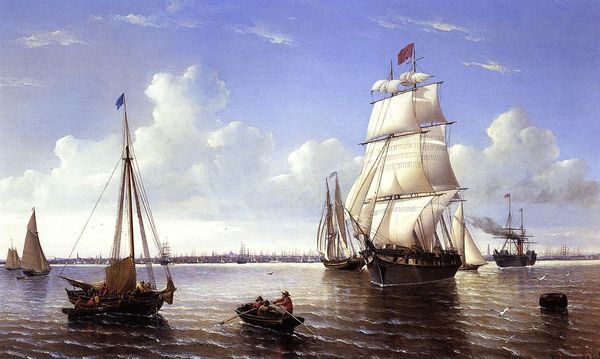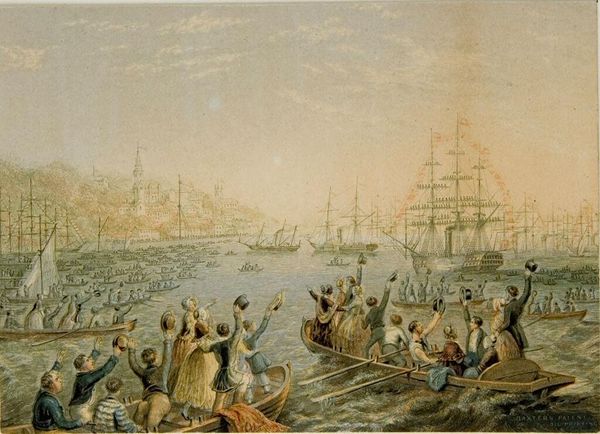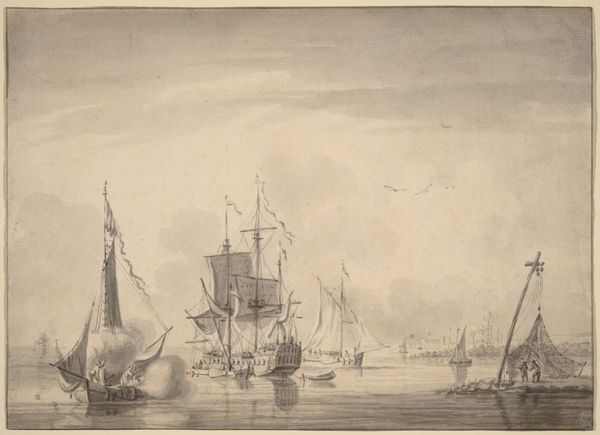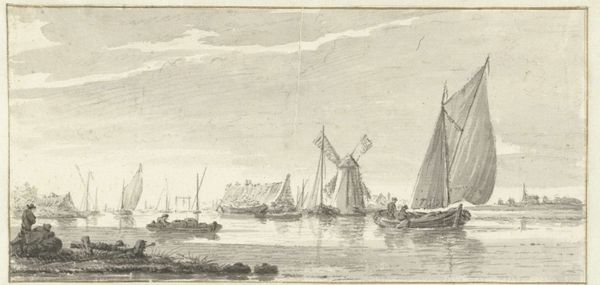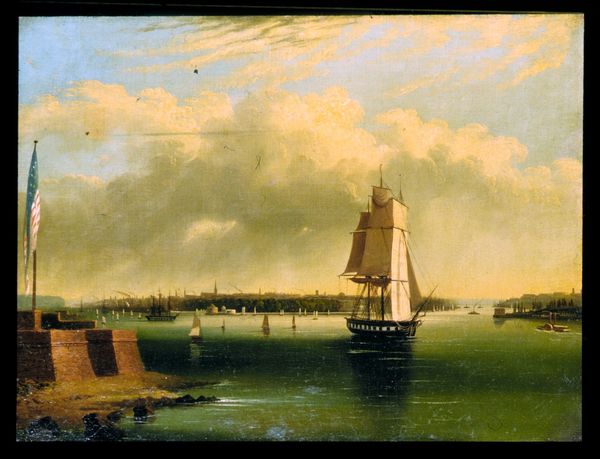
drawing, ink, pencil
#
drawing
#
landscape
#
perspective
#
ink
#
pencil
#
hudson-river-school
#
cityscape
#
history-painting
#
academic-art
Dimensions: 13 7/16 x 20 3/8 in. (34.1 x 51.8 cm)
Copyright: Public Domain
Editor: So, this is Nicolino Calyo's "View of New York from Williamsburg," created sometime between 1799 and 1884, using pencil and ink. It's a captivating cityscape. What do you see in this piece beyond its surface beauty? Curator: Well, beyond its aesthetic appeal, I'm particularly drawn to what this work reveals about production and consumption in that era. Look at the ships – the drawing meticulously renders the infrastructure that enabled trade and the movement of goods. Can you imagine the labour involved in constructing and operating those vessels? Editor: Absolutely! All those boats represent people and materials coming and going. It makes you think about what was being shipped. Curator: Precisely. This piece allows us to explore New York’s economic and social development during that time. What kinds of commodities do you think were flowing in and out of the port? Editor: I would assume mostly raw materials. Maybe lumber, agricultural products, definitely manufactured goods from Europe too. And people, of course, lots of people migrating. Curator: Consider then the physical spaces, the docks and buildings – how were these built and by whom? Where did the raw materials come from, and what kind of power dynamics were in play? I wonder too about the materiality of the drawing itself – the paper, the ink, the very act of its production. It represents more than just an artistic statement; it's a record of labor, industry and materials intertwined. It’s quite interesting to think of art as a tangible document of those economic conditions. Editor: This really makes me see it with a different perspective, less as a static vista and more as a moment in a cycle of labor and resources. Curator: Indeed! By looking at art through this materialist lens, we can unearth stories that go beyond what the image initially presents.
Comments
No comments
Be the first to comment and join the conversation on the ultimate creative platform.
